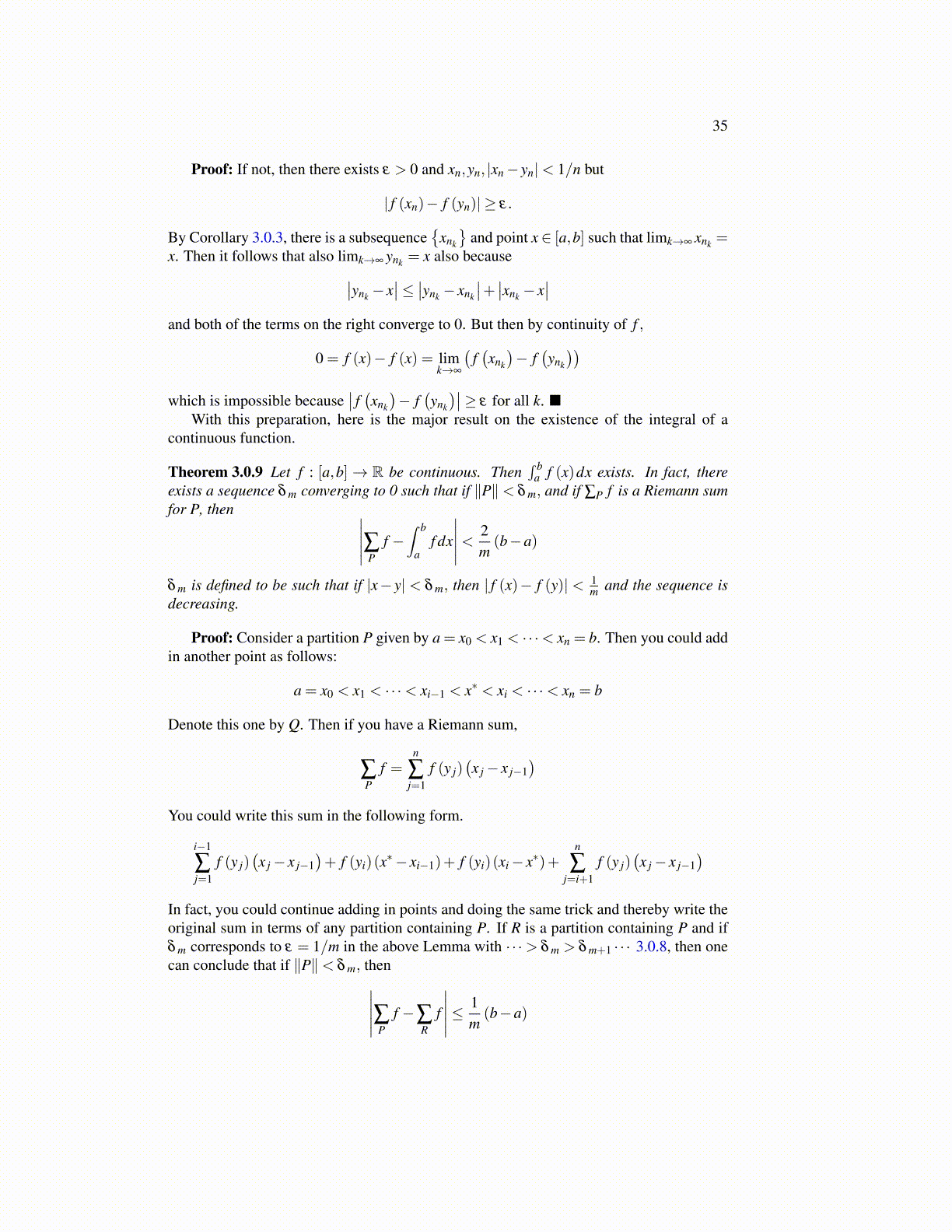
35
Proof: If not, then there exists ε > 0 and xn,yn, |xn− yn|< 1/n but
| f (xn)− f (yn)| ≥ ε.
By Corollary 3.0.3, there is a subsequence{
xnk
}and point x∈ [a,b] such that limk→∞ xnk =
x. Then it follows that also limk→∞ ynk = x also because∣∣ynk − x∣∣≤ ∣∣ynk − xnk
∣∣+ ∣∣xnk − x∣∣
and both of the terms on the right converge to 0. But then by continuity of f ,
0 = f (x)− f (x) = limk→∞
(f(xnk
)− f
(ynk
))which is impossible because
∣∣ f (xnk
)− f
(ynk
)∣∣≥ ε for all k. ■With this preparation, here is the major result on the existence of the integral of a
continuous function.
Theorem 3.0.9 Let f : [a,b]→ R be continuous. Then∫ b
a f (x)dx exists. In fact, thereexists a sequence δ m converging to 0 such that if ∥P∥< δ m, and if ∑P f is a Riemann sumfor P, then ∣∣∣∣∣∑P f −
∫ b
af dx
∣∣∣∣∣< 2m(b−a)
δ m is defined to be such that if |x− y| < δ m, then | f (x)− f (y)| < 1m and the sequence is
decreasing.
Proof: Consider a partition P given by a = x0 < x1 < · · ·< xn = b. Then you could addin another point as follows:
a = x0 < x1 < · · ·< xi−1 < x∗ < xi < · · ·< xn = b
Denote this one by Q. Then if you have a Riemann sum,
∑P
f =n
∑j=1
f (y j)(x j− x j−1
)You could write this sum in the following form.
i−1
∑j=1
f (y j)(x j− x j−1
)+ f (yi)(x∗− xi−1)+ f (yi)(xi− x∗)+
n
∑j=i+1
f (y j)(x j− x j−1
)In fact, you could continue adding in points and doing the same trick and thereby write theoriginal sum in terms of any partition containing P. If R is a partition containing P and ifδ m corresponds to ε = 1/m in the above Lemma with · · ·> δ m > δ m+1 · · · 3.0.8, then onecan conclude that if ∥P∥< δ m, then∣∣∣∣∣∑P f −∑
Rf
∣∣∣∣∣≤ 1m(b−a)